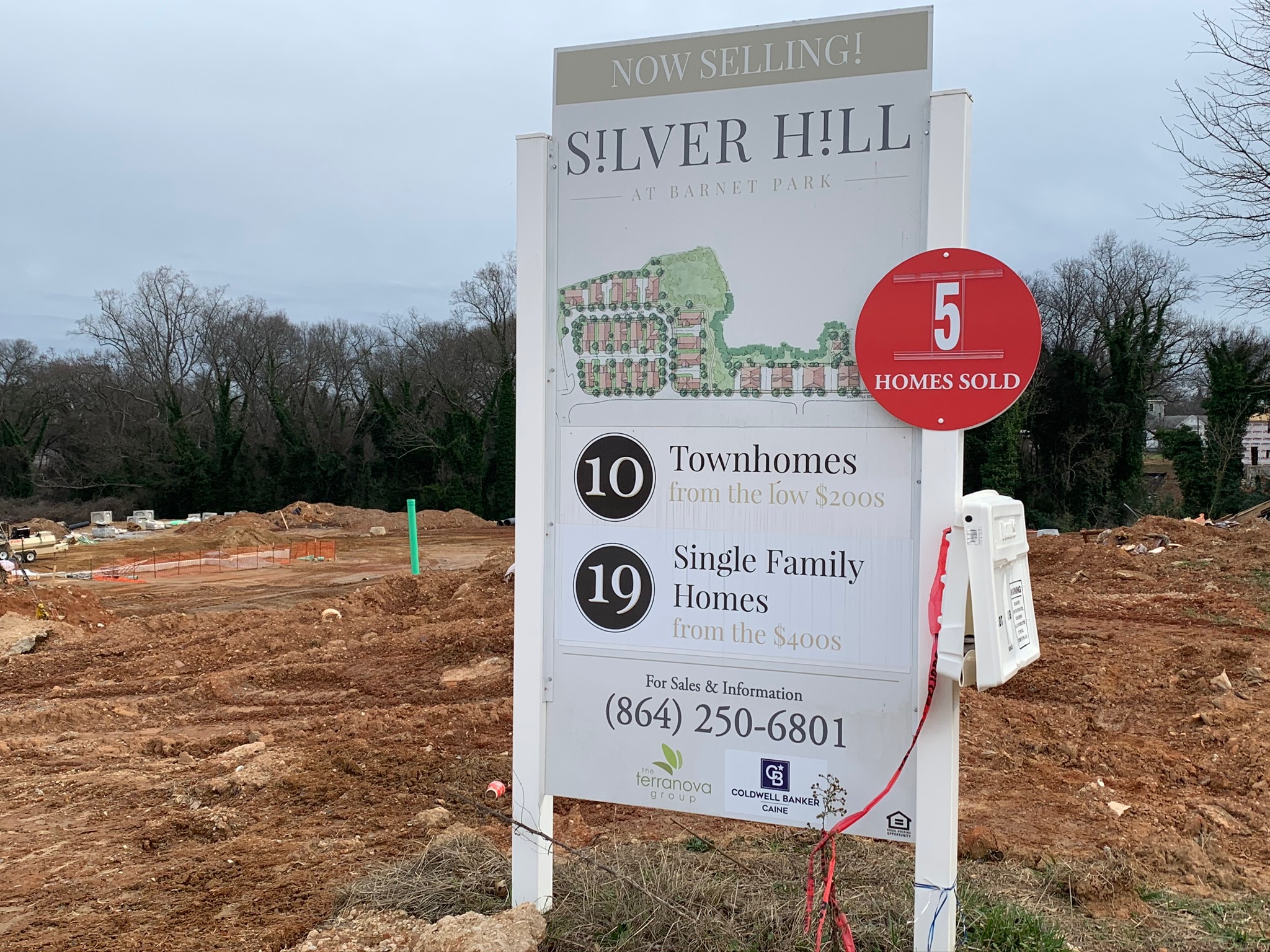Above, construction on a multi-use building with office space and apartments is nearing completion, while site work continues across the street on a new 90-unit multi-family development.
The good economic news for Spartanburg continues to roll in:
- The total of new investment in Spartanburg County since 2016 has surpassed $3 billion, highest of any county in the state over that period.
- More than 5,500 new jobs have been created here during that same time.
- The city has seen hospitality tax revenue set records every year since 2012, and revenue from the penny sales tax passed in 2017 has surpassed projections.
Most of the Spartanburg business owners we talk to remain cautiously optimistic that 2020 will be another good year for them. Several continue to point to a tight labor market as perhaps the biggest challenge to their ability to grow. On that front, new job skills programs such as a construction trades training program on the city’s Northside are gaining momentum. They are adding fuel to Spartanburg Community College’s and other local schools’ longtime efforts to address local employers' needs.
Local development experts, meanwhile, believe Spartanburg has entered 2020 poised to begin growing in new ways — even as the area remains a powerhouse in the manufacturing and distribution sectors. Much of the most dynamic growth will continue to be where it has been focused for the past decade: in Downtown Spartanburg. As Jansen Tidmore, the Executive Vice President of Urban and Corporate Development at the Spartanburg Area Chamber of Commerce succinctly summarized in a recent conversation: “A new year. A new decade. But one thing that will not change is the upward trajectory of Downtown Spartanburg.”
From dozens of new restaurants and apartment units, to the stunning renovations of landmarks such as the Montgomery and Aug W. Smith buildings, the revitalization of Downtown Spartanburg is well-established. It has begun to draw the attention and praise of economic development experts nationwide. At the same time, several significant downtown buildings and parcels remain vacant and/or underutilized, which means opportunities remain to further elevate and cement Downtown Spartanburg a a regional business center and destination.
What’s next?
Some of the most prominent properties getting the most attention include the sprawling former Snyder Electric parcel on Daniel Morgan Avenue, adjacent to the Spartanburg AC Hotel; the block currently occupied by the building housing the Spartanburg Herald-Journal at the corner of West Main and Daniel Morgan; the former Kresse and Montgomery Ward department store buildings on West Main; the empty parcel at the southeast corner of Church and East St. John streets; and the remaining undeveloped acreage adjacent to the Spartanburg Marriott, Chapman Cultural Center and Barnet Park.
Some residential projects have been announced on the latter property, including a number of homes currently under construction and a 200-plus unit upscale apartment development that it is hoped will break ground this year. A Florida-based developer is behind that multi-family project. In a potential sign of things to come, it would represent one of the largest investments to date in Downtown Spartanburg by a non-local developer.
“I think where we have really seen growth and remain bullish in the City is in commercial real estate development. And I think many people have been encouraged by a rising level of outside investment, which we really didn’t see much of for many years,” said Steve Querin, a local commercial real estate and business attorney who has represented both the City and developers on many of Downtown Spartanburg’s most notable projects over the past decade.
Tidmore echoed that observation. “We are not the best kept secret anymore and looking ahead, we believe the investments coming will finally match our ambition,” he said. “Expect the investor pool to continue to grow with both local and regional developers, but also watch as the national developers who have been sniffing around Spartanburg start activating dollars into our market.”
Finding the Proper Balance
What that looks like exactly remains an open question. Regional and national developers new to Spartanburg bring different expectations and experiences that guide their decisions, not to mention new and different relationships with potential office, retail and restaurant tenants. That this evolution could be occurring at precisely the same moment the City of Spartanburg is developing a new comprehensive plan to guide future development could be either a complicating factor or a stroke of good fortune and timing.
“I think the City will soon be at a crossroads as to what types of businesses it can expect to locate here,” Querin said. “True local businesses could soon struggle with lease rates and more regional and national chains will likely be showing interest. While this can be a good problem to have, the question is how do you balance the two?”
Meanwhile, both Tidmore and Querin point to residential development as an area they expect to continue to grow downtown in 2020 and beyond. With nearly 500 today, the city is nearly halfway to an initial goal of 1,000 downtown residential units. Just eight years ago, there were fewer than 100. The corresponding rise in the central business district’s 24-hour, 7-day-a-week population has driven much of the demand for additional restaurants, retail, watering holes and other forms of entertainment, such as the newly opened UnderPin bowling alley on Morgan Square.
And even as Tidmore thinks there may be some “leveling off” coming on the heels of several record-setting years in the restaurant, retail and entertainment sectors, he and Querin note interest in larger multi-family, hotel, office and mixed-use projects continues to grow.
“We are seeing more interest in office space and we hope that increasing our capacity in that arena makes traction in 2020,” Tidmore said. “We are blessed with a large downtown footprint with several large tracts of dirt. Developers have noticed this as well, and those conversations will likely start making headlines in 2020.”
Changing Equation for City Leaders
All of which could put decision-makers in City Hall in a new position. For years, the City has offered incentives to nearly any viable downtown project, from luxury hotels representing tens of millions of dollars in investment to the smallest restaurant and retail concepts. While it is hard to predict the specific size and shape of the next wave of investments that will change Downtown Spartanburg’s skyline, the equation has likely changed in terms of how city leaders will evaluate which projects merit development subsidies.
“The city likely can be more selective as to what types of developments they want to incentivize,” Querin said. “At the same time, developers are more savvy than ever when it comes to tax credits that are available on the state and federal level. I think these tend to fill the gaps for the projects that may need them for financial viability. So for that and other reasons, optimism remains high.”
Again, Tidmore provides a compelling summary:
“All in all, 2020 will be an exciting year for Downtown Spartanburg. It is the year we start building upon the foundation of the last decade. Will we have obstacles? Of course. Will we make mistakes? Obviously. But we know that our approach, metrics, and intangibles have the necessary staying power that will be demanded from Spartanburg to make this next decade top the last.”
And for people who understand where Downtown Spartanburg was in 2010 and where it is today, that’s an exciting prospect.
NOTE: We’ll be back soon with a look at what the next year holds in store for growth and development elsewhere in Spartanburg.


